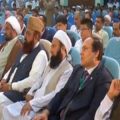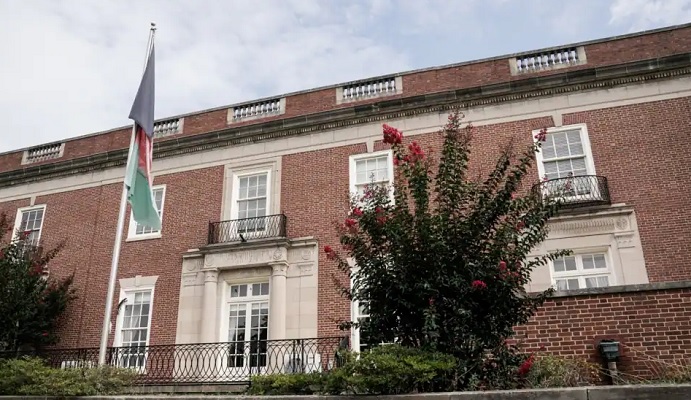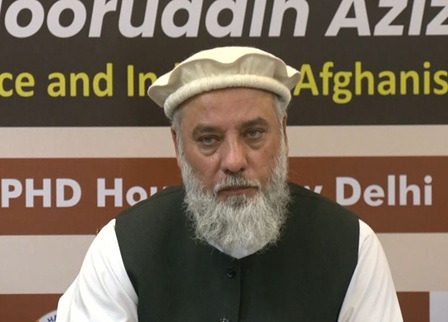
By: Ahmad Shah Angar
Afghanistan has experienced roughly three waves of Islamic extremism from Late President Daud Khan rule to the present day. Since Presidency of Daud Khan the end of the Afghan-Soviet war in 1989, mullahs or religious scholars, a consolidated political power to counteract the actions of the Afghan state. From 1996 to 2001, the mullahs from the dominant Pashtun ethnic group ensured the dissemination of radical ideologies through the imposition of madrassas, or religious schools, as the primary form of education. Following the U.S. invasion of Afghanistan in 2001, the Afghan government has taken on the traditional contours of a functioning nation-state. However, the Afghan government has failed to sufficiently address the threat posed by the continued radicalization of Afghan youths through madrassas and the “soft power” of mullahs in Afghanistan. Until this issue is addressed through concrete actions, Afghanistan will remain a powder keg of violence.
First and second wave: Resisting communist rule and the Taliban takeover
The first wave of extremism in Afghanistan encompassed the period from Afghanistan’s regime change from constitutional monarchy to republic till the withdrawal of Soviet troops in 1989 following the Soviet-Afghan war, which was viewed as communist-leaning. Previously mullahs were not persecuted, but in time of Communists regime most of Mullahs were persecuted, and communist had a slogan that Mullah, Sayed ( religious people, who are descendants of Prophet of Islam ) and Landlords have to be removed.
With this early political backing, mullahs and the Afghan mujahideen were well-placed to mobilize a large number of Afghans to declare jihad against the invading Soviet Union in 1979. Mullahs further entrenched their power throughout the war by altering the nature of education in Afghanistan. Portraying all academic institutions as vectors of communism, mullahs from the majority Pashtun ethnic group began to indoctrinate extremist ideologies madrassas.
By the time the Soviet Union withdrew in 1989, Afghanistan was a collapsed state with no lack of indoctrinated youth. Consequently, the mujahedeen were able to consolidate their support for a Taliban takeover of the Afghan state. Under the Taliban regime from 1996 to 2001, the second wave of Islamic extremism in Afghanistan, mullahs were appointed to high-level positions throughout the government. The state adopted a hardline Islamic extremist ideology and ensured this ideology infiltrated every aspect of Afghan life.
Third wave: A subtle resurgence
Following the American invasion of Afghanistan and the overthrow of the Taliban regime, the Afghan government, first under Hamid Karzai and then Ashraf Ghani, has attempted to focus on economic development, state-building, and military action against a continuing Taliban insurgency. While there is evidence that governance and development are progressing, the Afghan government should not forget the large swaths of Afghan citizens who were exposed to extremist ideologies for more than 20 years. The “soft power” of mullahs in mosques should thus remain a chief concern that radicalization and violence against the Afghan state will continue until the foreseeable future.
In addition to the Taliban insurgency, some new extremist groups and movements have entered the scene. These groups include Hizb-ut-Tahrir and Jamait-e-Islah, which are believed to target professors and students in Afghan universities. Mullahs who are not associated with the current armed opposition to the government have reportedly stopped holding prayers for Afghan soldiers killed fighting against Taliban
Despite the obvious presence of these extremist groups in Afghan society, the Afghan government has not taken sufficient action against them. This year, for example, one modernist mullah by name of Abdul Ghafoor was killed in Kandahar province for speaking out against the Taliban and the influence of Islamic extremist ideologies.
The existence of groups such groups and the continued violent rhetoric of mullahs are a structural and cultural source of violence and war in Afghanistan. This reality has been fueled, in part, by decisions taken by the international community when it formed the new Afghan state in 2001. During this period, they allowed former mujahideen to contest for power and thus ultimately perpetuate extremist leanings.
As such, mullahs are influencing a new generation against the state and threatening Afghan democracy. Most Afghan youths are living in rural areas, where the majority of children are attending madrassas with classes taught by extremist mullahs. As a result, extremist organizations have a ready-made mechanism for the spread of extremist ideologies against the government of Afghanistan.
If Afghan democracy is to survive, the government should take a lesson from Turkey and register all madrassas and mosques through formal government mechanisms, create licensing processes for mullahs, and establish a legally-enforced curriculum for madrassas. Yet the presence of many former mujahideen in the current government prohibits progress on this front, as they are against such ideas.
The existence of such institution and entities in are sources of Islamic extremism because daily they are propagating their extremist ideology. Mullahs have stated a very harmful idea to people, that in Quran which states that education is obligatory, it’s points only religious education, not science, that is why people should not send their children to schools, where science is being taught. By such idea, people prefer only religious knowledge, and source of this knowledge is mullah, and whatever mullahs, people accept it is total truth and reject others argument.
In madrasas, one of the important subject in religious education is Jihad and Islamic state, which clearly reject such state which is not implementing Sharia law. Which says it is the obligation of every Muslim to destroy such regime and bring a regime which is implementing Sharia. And attracting such students from such madrasas by Taliban, ISIL or other extremists groups is a very easy job. Because that is what Taliban or ISIL slogan is , bring Islamic State.
Most of Mullahs are trained in Pakistani Madrasas, which are brainwashed and indoctrinated, so Afghan government should take exam and find out what kind of ideas they have, if they were having extremist ideas they should not be allowed to Mullah in Masque, and they should give them license, including salary, as the government of Afghanistan has one Ministry of Hajj and Religious Affairs, which have this responsibility.
Nowadays everyone can make madrasa and Mosque, and anyone can be Mullah and religious scholar in such madrasas, which are mostly used by Taliban, ISIL and other groups to attract people and provoke people against state, if they all came under government list, and all mullahs get proper salary with license , and government give its own curriculum to madrasa for teaching. Such problem will be resolved.
Bio
Ahmad Shah Angar
Ahmad Shah Angar is a political analyst, with 12 years experience in media, communications, and legal affairs in Afghanistan. He was a journalist with the BBC Afghan Service in Afghanistan and has also worked as an interpreter and communications officer in many international organizations like the United Nations Development Program as well as with U.S. and ISAF forces in Afghanistan. Currently, he is an MA student in Conflict Analysis and Peacebuilding at Jamia Milia Islamia in New Delhi, India.
Delhi, India.






